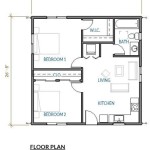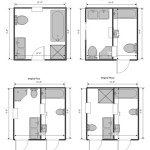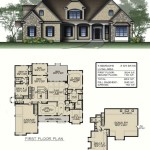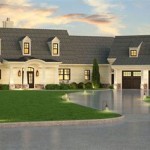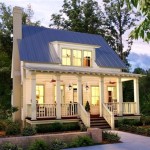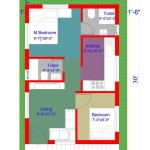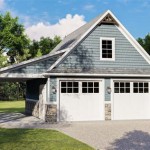Small Mother-In-Law House Plans: Designing for Comfort and Functionality
The demand for multi-generational living spaces is on the rise, driven by economic factors, shifting cultural norms, and the desire to keep families closer together. Among the various architectural solutions addressing this need, the "mother-in-law suite," also known as an accessory dwelling unit (ADU), granny flat, or in-law apartment, stands out as a practical and often cost-effective option. This article explores the key considerations when planning and designing small mother-in-law house plans, focusing on the essential elements that contribute to a comfortable, functional, and independent living space for aging relatives or other family members.
A crucial aspect of designing a successful mother-in-law suite lies in understanding the specific needs and preferences of the occupant. This requires careful communication and a thorough assessment of their mobility, health considerations, lifestyle, and personal preferences. The design should prioritize accessibility, safety, and privacy while also integrating seamlessly with the existing property. Several factors, including local zoning regulations, budget constraints, and the overall aesthetic of the main house, will significantly influence the final design choices.
Accessibility and Universal Design Principles
Accessibility is paramount when designing a mother-in-law suite intended for older adults or individuals with mobility challenges. Universal design principles should be incorporated throughout the space to ensure ease of use and long-term adaptability. This involves considering features such as wider doorways and hallways to accommodate wheelchairs or walkers, lever-handled door hardware for easier operation, and roll-in showers with grab bars for enhanced safety. Non-slip flooring surfaces are essential to prevent falls, and adequate lighting is crucial to improve visibility.
The kitchen design should also prioritize accessibility. Adjustable-height countertops and sinks can accommodate users of different heights, allowing for comfortable food preparation and cleanup. Pull-out shelves and drawers in base cabinets maximize storage and minimize the need to bend or reach. Appliances with easy-to-read controls and accessible placement further contribute to a user-friendly kitchen environment. Consideration should also be given to the placement of electrical outlets and light switches, ensuring they are easily accessible without requiring excessive reaching or bending.
Furthermore, the bathroom design should focus on safety and convenience. A comfort-height toilet with grab bars provides added support and stability. A walk-in tub or roll-in shower eliminates the need to step over a high threshold, reducing the risk of falls. Adjustable showerheads and handheld sprayers offer greater flexibility and control. The installation of grab bars near the toilet and in the shower area is a standard safety measure. Sufficient space should be allocated in the bathroom to allow for easy maneuvering and turning radius for wheelchairs or walkers.
Beyond the interior features, the exterior access to the mother-in-law suite should also be carefully considered. A gently sloping ramp or a zero-step entry ensures easy access for individuals with mobility limitations. Well-lit pathways and ample outdoor lighting enhance visibility and safety, particularly during nighttime hours. The landscaping should be designed to minimize tripping hazards and maintain clear pathways. Consider incorporating features such as raised garden beds for accessible gardening activities.
Optimizing Space and Functionality in Small Footprints
Small mother-in-law house plans often require creative solutions to maximize space and functionality. Every square foot must be carefully considered to ensure a comfortable and efficient living environment. Multi-functional furniture, such as sofa beds or storage ottomans, can serve multiple purposes and save valuable floor space. Built-in storage solutions, such as shelves, drawers, and cabinets, can help to declutter the space and keep belongings organized.
The kitchen design should prioritize efficiency and functionality. Compact appliances, such as a smaller refrigerator, a two-burner cooktop, and a convection microwave oven, can save space without compromising on essential cooking capabilities. A pull-out pantry or a narrow rolling cart can provide additional storage for food items. Consider the use of vertical space by installing shelves or cabinets that extend to the ceiling. A small dining table with folding chairs can provide a comfortable eating area without taking up too much space when not in use.
The living area should be designed to promote relaxation and comfort. A comfortable sofa or loveseat, along with a small coffee table and a television, can create a cozy and inviting space for relaxation and entertainment. A strategically placed mirror can reflect light and create the illusion of a larger room. Light-colored walls and flooring can also help to brighten the space and make it feel more open. Think about incorporating natural light through strategically placed windows and skylights.
The bedroom should be a tranquil and restful space. A comfortable bed, along with a dresser and a nightstand, are essential furnishings. Built-in closets or shelving can provide ample storage for clothing and personal belongings. Adequate lighting, including bedside reading lamps and overhead lighting, is crucial for creating a comfortable and functional bedroom. Soundproofing measures, such as insulated walls and windows, can help to minimize noise and promote restful sleep.
In addition to the main living areas, a small mother-in-law suite may also include a laundry area. A stackable washer and dryer can save space and provide convenient laundry facilities. Consider incorporating shelves or cabinets for storing laundry supplies. A small folding table or a clothes drying rack can also be useful additions to the laundry area.
Privacy and Independence: Creating Separate Living Spaces
Maintaining privacy and independence is crucial for both the occupants of the main house and the occupants of the mother-in-law suite. Careful planning is essential to create separate living spaces that offer a sense of autonomy and personal space. A separate entrance to the mother-in-law suite is highly desirable, as it allows occupants to come and go without disturbing the residents of the main house.
Soundproofing is another important consideration for maintaining privacy. Insulating the walls and ceilings between the main house and the mother-in-law suite can help to minimize noise transmission. Solid-core doors and double-paned windows can further reduce noise levels. Consider the placement of the mother-in-law suite in relation to the main house, avoiding locations where noise from activities such as television watching or music playing could be easily transmitted.
Visual privacy is also important. Strategically placed windows and landscaping can help to create a sense of privacy and seclusion. Consider using window coverings such as blinds, curtains, or shades to control the amount of natural light and to block unwanted views. A privacy fence or a row of trees or shrubs can also provide a physical barrier between the two living spaces. The orientation of windows should minimize direct sightlines into the main living spaces of either dwelling.
In addition to physical separation, clear communication and established boundaries are essential for maintaining healthy relationships and respecting each other's privacy. Openly discuss expectations regarding shared spaces, noise levels, and visitation guidelines. Regularly check in with each other to address any concerns or issues that may arise. A written agreement outlining the responsibilities and expectations of each party can help to prevent misunderstandings and ensure a harmonious living arrangement.
Consider providing the mother-in-law suite with its own separate utilities, such as electricity, water, and gas, to further enhance independence. This will allow the occupants to manage their own energy consumption and avoid potential conflicts over utility bills. A separate heating and cooling system will also allow occupants to control the temperature in their own living space. The utility connections should be professionally installed and meet all applicable building codes.
Finally, promoting independence involves encouraging the occupant of the mother-in-law suite to maintain their own social connections and activities. Encourage them to participate in community events, pursue their hobbies, and stay connected with friends and family. Provide them with resources and support to help them maintain their independence and well-being. This could include providing transportation assistance, connecting them with local senior services, or simply offering companionship and support.

Small Mother In Law Suite Floor Plans Home Design Cottage Apartment

Mother In Law National Home Builders

870 Best Mother In Law Cottage Ideas 2024 Small House Plans Floor

22x24 Guest House Plan Tiny In Law Apartment

Mother In Law Apartment House Small Plans

Designing And Building New Homes With Mother In Law Suites David Weekley

Homes With Mother In Law Suites

Mother In Law Suites Small House Floor Plans Cottage Farmhouse

Designing And Building New Homes With Mother In Law Suites David Weekley

Mother In Law Suite Floor Plans Basement House

